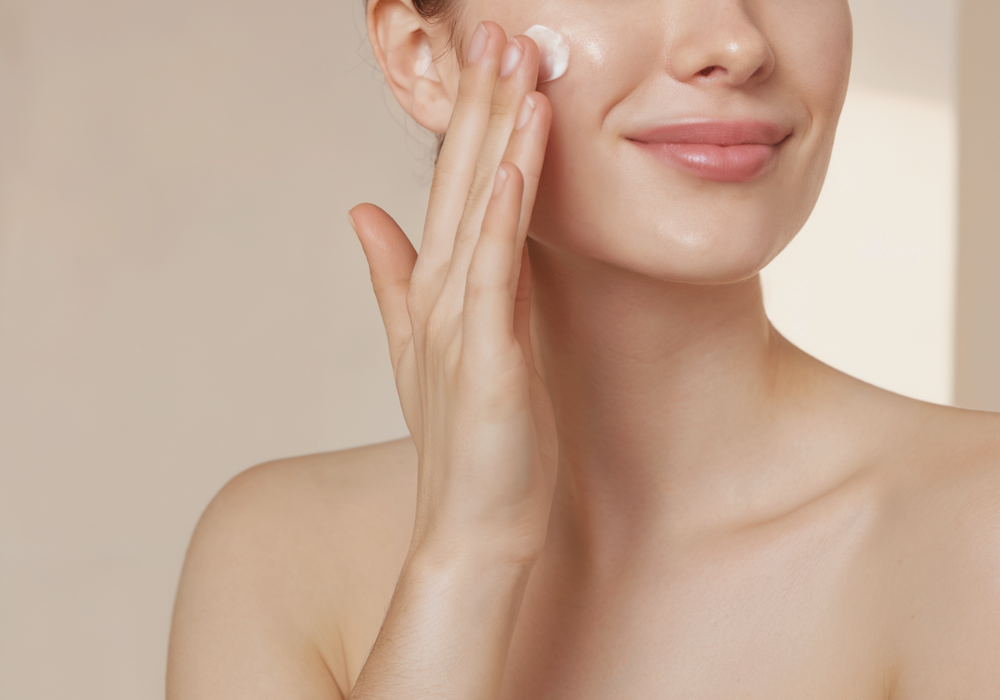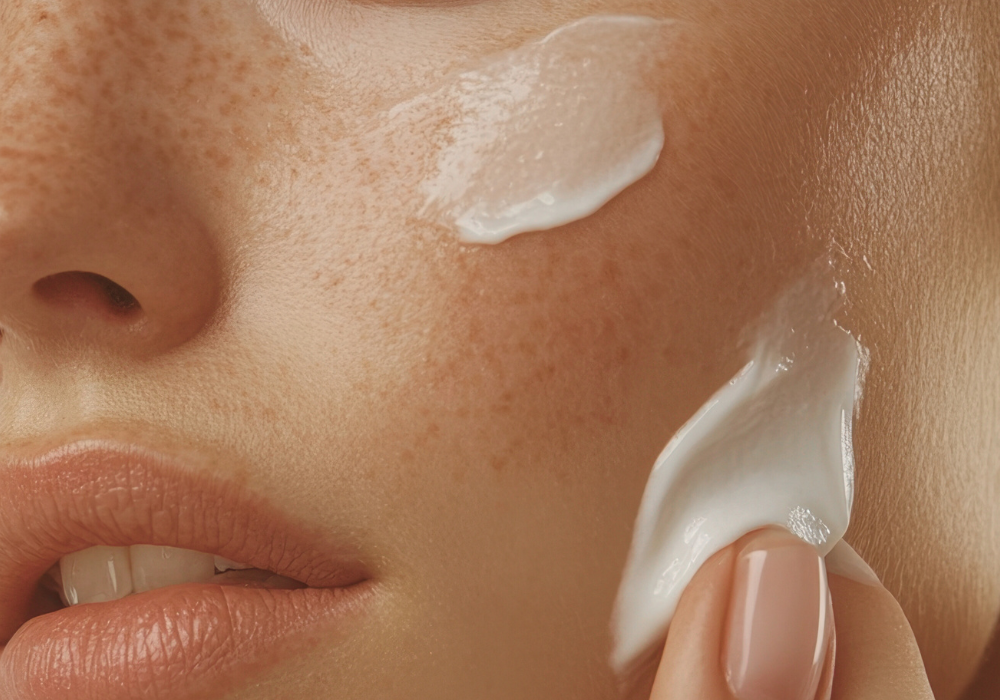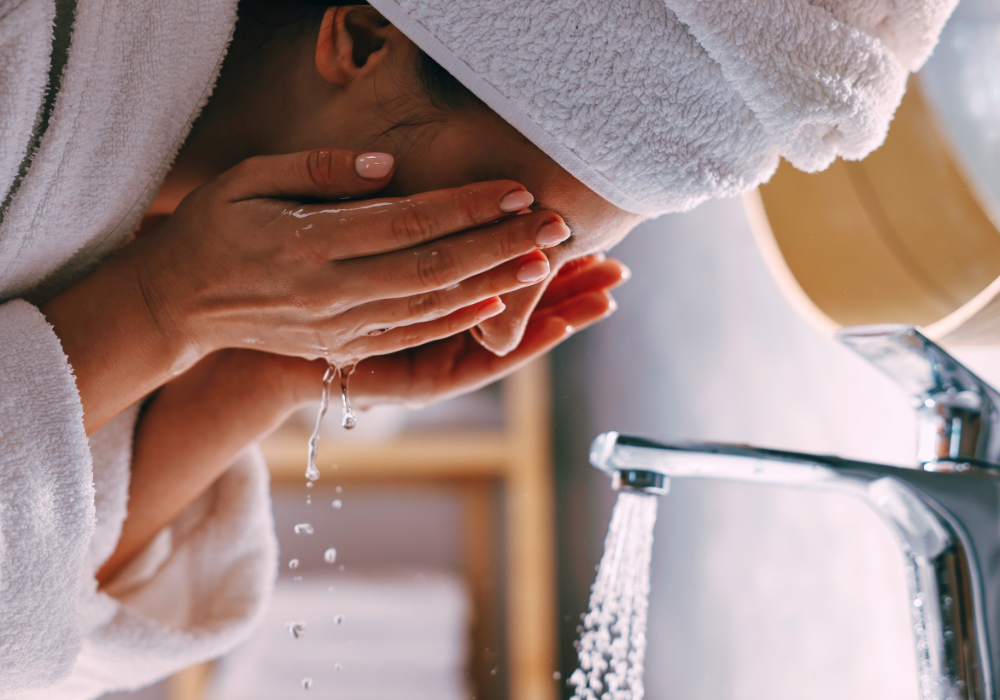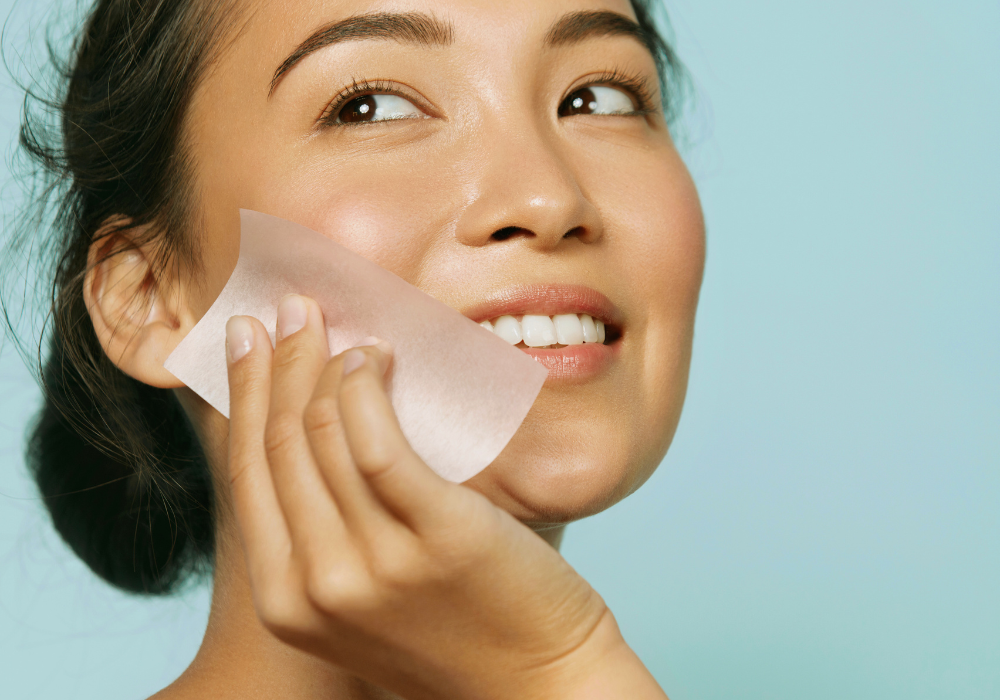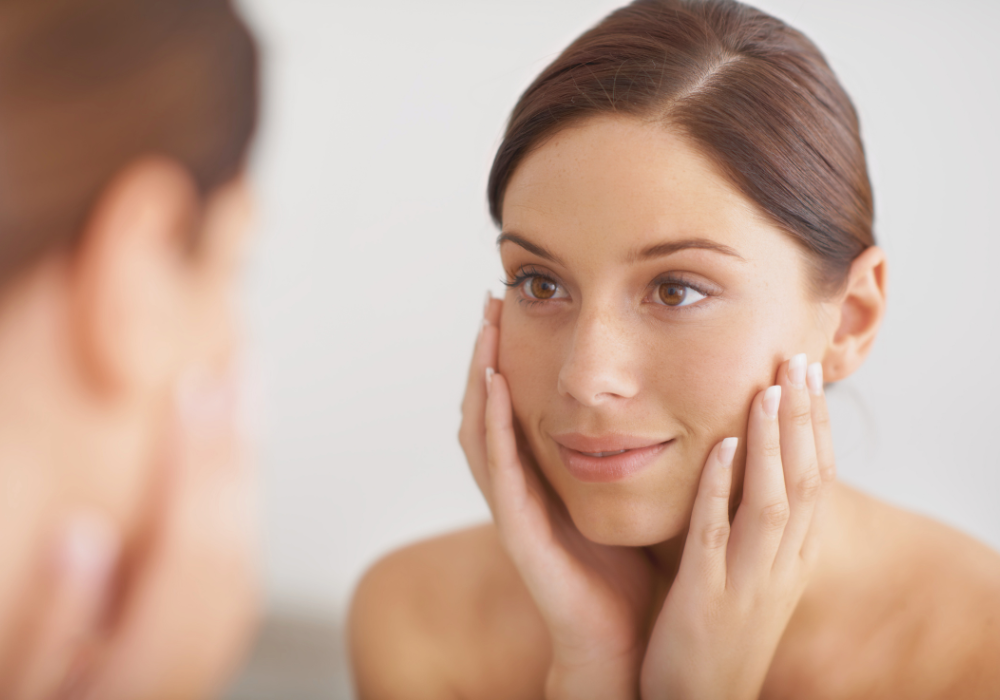Comprehensive market intelligence compiled from extensive research on the global skincare industry, consumer behavior trends, and emerging product categories
The global skincare market has reached a pivotal moment, with industry valuations exceeding $115 billion and transformative shifts reshaping how consumers discover, purchase, and experience skincare products. For brands committed to premium skincare simplified through science-backed formulations, understanding these market dynamics reveals substantial opportunities in emerging segments where multifunctional, ethical products are gaining momentum. This data-driven analysis examines 18 critical statistics that define the current skincare landscape and illuminate pathways for brands delivering visible results through streamlined routines.
Key Takeaways
-
Market expansion remains robust across all segments - The global skincare market grew from $115.69 billion in 2024 to $123.64 billion in 2025, with projections reaching $224.83 billion by 2034, representing a 6.87% compound annual growth rate that creates sustained opportunities for brands offering differentiated formulations
-
Personalization drives the fastest segment growth - Personalized skincare expands at 11.4% annually, nearly double the overall market rate, signaling consumer preference for targeted solutions over generic mass-market products and creating demand for science-backed, results-focused formulations
-
Clean beauty transitions from niche to mainstream - Vegan and cruelty-free skincare products now command premium positioning as organic skincare reaches $13.21 billion in 2025, reflecting consumer prioritization of ethical, transparent ingredient formulations over conventional alternatives
-
Facial cleansers anchor daily routines and drive category revenue - Face creams and moisturizers generate 42% of skincare industry revenue, establishing cleansing and hydration as foundational categories where multifunctional products combining exfoliation, purification, and moisture deliver exceptional value
-
Direct-to-consumer models capture market share from traditional retail - E-commerce represents the fastest-growing distribution channel as consumers favor subscription models and digital discovery, enabling brands with streamlined product lines to compete effectively against multinational corporations
Global Skincare Market Size and Revenue Projections
1. Global skincare market reaches $123.64 billion in 2025
The global skincare market achieved $115.69 billion in 2024 and expanded to $123.64 billion in 2025, representing consistent growth momentum across product categories and geographic regions. This expansion reflects sustained consumer prioritization of skincare within beauty and personal care spending, with market resilience demonstrated even amid broader economic uncertainties. The market's scale creates substantial opportunities for brands delivering science-backed formulations that address fundamental skin health needs through simplified, effective approaches. Source: Toward Healthcare
2. Industry projections forecast $224.83 billion market by 2034
Market analysts project the global skincare industry will nearly double from current valuations to reach $224.83 billion by 2034, representing a 6.87% compound annual growth rate over the decade. This trajectory indicates the skincare market will continue expanding faster than general retail sectors, driven by demographic shifts, increased skin health awareness, and innovation in formulation technologies. Brands positioned with multifunctional products that simplify routines while delivering visible results are particularly well-suited to capture share within this expanding market. Source: Toward Healthcare
3. United States skincare market represents $24 billion in annual spending
The US skincare market generates approximately $24 billion in 2025, accounting for roughly 16% of global skincare spending despite representing less than 5% of world population. This disproportionate spending reflects American consumers' willingness to invest in premium products with demonstrated efficacy and clean ingredient profiles. The US market is projected to reach $30.42 billion by 2032, creating sustained growth opportunities for brands emphasizing dermatologist-backed science and cruelty-free formulations. Source: Tricoci University of Beauty Culture
Skincare Market Growth Drivers and Consumer Trends
4. Personalized skincare segment expands at 11.4% annually through 2034
Personalized skincare represents the fastest-growing market segment, valued at $22.5 billion in 2024 and projected to reach $63.7 billion by 2034 with an 11.4% compound annual growth rate. This nearly doubles the overall market growth rate of 6.87%, signaling fundamental consumer preference shifts from one-size-fits-all products toward targeted solutions addressing individual skin conditions and concerns. The trend validates approaches emphasizing science-backed exfoliating cleansers with specific active ingredient concentrations formulated to deliver measurable results across diverse skin types. Source: Insight Ace Analytic
5. North American beauty sector achieves 9% year-over-year growth as consumers trade up
The broader North American beauty sector expanded 9% year-over-year in 2023 as consumers increasingly traded up to premium products, demonstrating market resilience and stable demand despite economic pressures. This premium trading behavior indicates consumers prioritize perceived efficacy, ingredient transparency, and brand ethics over price considerations when selecting skincare products. Brands offering lightweight formulas with charged hyaluronic acid and triple action hydroxy acids align with consumer willingness to invest in products delivering exceptional hydration and visible skin renewal. Source: Tricoci University of Beauty Culture
6. Male grooming emerges as fastest-growing demographic segment
Male grooming products experience rapid expansion, now generating tens of billions of dollars globally and representing the fastest-growing demographic segment within skincare markets. While women continue purchasing the majority of skincare products, male consumer engagement is transforming market dynamics and expanding total addressable markets for brands developing gender-neutral formulations. Products formulated for all skin types—normal, dry, combination, and oily—position brands to capture growth across expanding demographic segments regardless of traditional gender marketing boundaries. Source: Tricoci University of Beauty Culture
Facial Cleanser Market Share and Category Performance
7. Face creams and moisturizers generate 42% of skincare industry revenue
Face creams and moisturizers represent the dominant product category, generating approximately 42% of total skincare industry revenue and establishing cleansing and hydration as foundational elements of consumer skincare routines. This concentration demonstrates that despite the proliferation of specialized treatments and serums, consumers consistently prioritize products addressing fundamental skin needs: purification, exfoliation, and moisture balance. Multifunctional cleansers that combine exfoliation, impurity removal, and hydration in single applications deliver exceptional value within this high-revenue category. Source: Tricoci University of Beauty Culture
8. Beauty market generates $446 billion globally with skincare capturing 44% share
The global beauty market generated approximately $446 billion in retail sales during 2023, with skincare products accounting for 44% of total beauty industry revenue. This percentage establishes skincare as the largest single category within beauty and personal care, exceeding makeup, haircare, and fragrance segments. The category's dominance reflects consumer prioritization of skin health over decorative beauty products, creating sustained opportunities for brands delivering science-backed formulations with visible results within 28-day timeframes. Source: Tricoci University of Beauty Culture
E-Commerce and Direct-to-Consumer Skincare Sales Statistics
9. E-commerce represents fastest-growing skincare distribution channel
While supermarkets and hypermarkets currently capture the largest share of skincare sales through mass-market distribution, e-commerce and subscription-based direct-to-consumer models represent the fastest-growing distribution channels in the industry. Digital channels enable consumers to discover niche brands, research ingredient formulations, and establish recurring purchase patterns through subscription services. This shift favors brands offering subscribe and save 20% models with auto-delivery every 8 weeks, creating customer lifetime value advantages over traditional one-time retail transactions. Source: Tricoci University of Beauty Culture
10. US beauty industry reaches $50.6 billion in first half of 2025
The United States beauty industry achieved $50.6 billion in retail sales during the first half of 2025, with mass-market skincare segments outperforming prestige categories in growth rates. This performance indicates sustained consumer demand across price points and demonstrates market expansion beyond premium-only segments. However, within mass-market channels, consumers increasingly select products with science-backed formulations and clean ingredient profiles, blurring traditional distinctions between mass and prestige positioning. Source: BeautyMatter
Clean Beauty and Vegan Skincare Market Expansion
11. Organic skincare market expands from $11.98 billion to $13.21 billion in single year
The organic skincare segment achieved $11.98 billion in 2024 and expanded to $13.21 billion in 2025, representing approximately 10% annual growth that exceeds overall market expansion rates. This acceleration reflects increasing consumer awareness of synthetic chemical effects on skin health and preference for naturally-derived ingredients with transparent safety profiles. Major corporations including Avon and Garnier now market dedicated natural product lines, validating consumer demand for vegan and cruelty-free formulations as mainstream preferences rather than niche segments. Source: The Business Research Company
12. Consumer awareness drives demand for naturally-derived ingredient formulations
Market research identifies growing consumer awareness of adverse effects from synthetic chemicals on skin as a primary driver of organic and natural product demand. Ingredients derived from plant sources—including citrus fruit extract blends, natural sugars for moisture retention, and pro-vitamin B5 for barrier support—demonstrate safety profiles without side effects associated with synthetic alternatives. This trend benefits brands formulating with charged hyaluronic acid, gluconolactone polyhydroxy acid, and naturally-derived hydroxy acid complexes that deliver exfoliation and hydration through science-backed mechanisms. Source: Fortune Business Insights
Anti-Aging and Skin Renewal Product Market Insights
13. Skincare supplement market projects growth from $4.18 billion to $7.28 billion by 2033
Skincare supplements represent an expanding adjacent market segment, valued at $4.18 billion in 2025 and projected to reach $7.28 billion by 2033. This 74% growth over eight years indicates consumer adoption of holistic approaches to skin health combining topical formulations with ingestible solutions. While supplements address internal factors, topical products with proven delivery mechanisms—such as charged hyaluronic acid engineered to bind water molecules to skin surfaces—provide immediate, visible hydration and plumping effects that complement supplement benefits. Source: Straits Research
Premium Skincare Segment Growth and Consumer Spending
14. Premium products demonstrate superior growth rates versus mass-market alternatives
Premium skincare segments consistently outperform mass-market categories in growth rates as consumers prioritize efficacy, ingredient quality, and brand ethics over price considerations. North American consumers particularly demonstrate willingness to trade up, seeking products with dermatologist-backed science, clean ingredient profiles, and inclusive positioning. This trend favors brands offering TSA carry-on approved 60ml products at $36.00 one-time purchase or $28.80 subscription pricing, positioning premium formulations as accessible luxury through streamlined product lines and direct-to-consumer models. Source: Tricoci University of Beauty Culture
Multifunctional Skincare Product Market Performance
15. Consumer preference shifts toward fewer, more effective products in streamlined routines
Market data demonstrates sustained consumer demand for multifunctional products delivering multiple benefits in single applications, reflecting preference for streamlined routines over complex 10-step regimens. Products combining exfoliation, impurity removal, and hydration—such as cleansers with triple action hydroxy acids, charged hyaluronic acid, and pro-vitamin B5—deliver three core benefits in one step, aligning with efficiency-driven consumer behavior. This trend validates approaches emphasizing premium skincare simplified through science-backed formulations that reduce product proliferation while maintaining or exceeding efficacy expectations. Source: Tricoci University of Beauty Culture
Regional Skincare Market Analysis and Growth Hotspots
16. Asia Pacific dominates with 51.58% market share and 7.64% annual growth
Asia Pacific controls 51.58% of global skincare market share in 2024 while expanding at 7.64% annually, representing both the largest and fastest-growing regional market. This dominance reflects population density, rising disposable incomes, and cultural prioritization of skincare within beauty routines across markets including China, Japan, South Korea, and Southeast Asian nations. While Asia Pacific leads innovation and sets global trends, North American brands compete effectively by emphasizing dermatologist-backed science, clean ingredients, and ethical manufacturing practices that resonate with premium-oriented consumers. Source: Fortune Business Insights
17. Innovation originates from East Asian companies but American brands emphasize scientific validation
Global skincare industry dynamics reveal that while innovations frequently originate from East Asian companies and quickly achieve worldwide adoption, American brands successfully compete by emphasizing dermatologist-backed formulations, clinical testing, and transparent ingredient disclosure. US consumers particularly value products formulated at skin's natural pH (4.5-5.5), manufactured domestically with rigorous quality standards, and supported by clear explanations of active ingredient mechanisms and expected outcomes. This creates opportunities for brands combining scientific rigor with lightweight formulas and ethical practices. Source: Tricoci University of Beauty Culture
Frequently Asked Questions
What is driving the global skincare market's consistent growth?
The skincare market expands at 6.87% annually through 2034, reaching projected valuations of $224.83 billion, driven by demographic shifts toward aging populations, increased skin health awareness, rising disposable incomes in emerging markets, and innovation in science-backed formulations delivering measurable results.
How is personalized skincare changing the industry landscape?
Personalized skincare grows at 11.4% annually—nearly double the overall market rate—as consumers shift from generic mass-market products toward targeted solutions addressing individual skin conditions. This trend validates science-backed approaches using specific active ingredient concentrations formulated for diverse skin types.
Why are multifunctional skincare products gaining market share?
Consumers increasingly prefer streamlined routines over complex multi-step regimens, driving demand for products delivering multiple benefits in single applications. Formulations combining exfoliation, purification, and hydration align with efficiency-driven behavior while maintaining or exceeding efficacy expectations.
What role does clean beauty play in current skincare market growth?
Organic and vegan skincare achieves approximately 10% annual growth as consumer awareness of synthetic chemical effects increases. Major corporations now market dedicated natural product lines, establishing clean beauty as mainstream preference rather than niche segment, with vegan and cruelty-free formulations commanding premium positioning.
How are distribution channels evolving in the skincare industry?
While traditional retail maintains the largest current share, e-commerce and direct-to-consumer subscription models represent the fastest-growing channels. Digital distribution enables brands with streamlined product lines to compete effectively against multinational corporations through subscription models and direct customer relationships.


